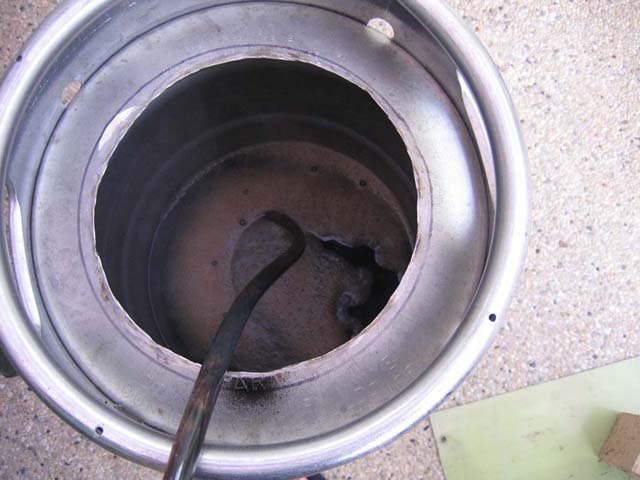I boil off 12-15% of my starting volume. Yes, I use the % figure and I actually change my setup (flame level, lid, pot size etc etc) to make sure that I fall in that range.
People constantly misunderstand what the % figure of boil off is for... its not really about how much you boil off in an hour, the figure is a
tool for expressing the
level of vigor in your boil.
If you are boiling off somewhere in the vicinity of 12-15% per hour, your boil is vigorous enough to do everything that its supposed to do, but its not so vigorous that you might be in danger of suffering some of the possible negative effects of boiling too hard. This is independent of the volume of your boil.
if you are always doing roughly the same batch size... then it just doesn't matter if you express your boil off as a percentage or a Litres/hour figure, but if you significantly vary your batch size then it will.
eg: I start with 22.5litres looking for 15% per hour (19into fermentor) and I boil off 3.4litres. Great, every time I do a batch I can just use 3.4ltres per hour... right?? Same pot, same burner settings.
Except when I do an 10 litre batch, then even if the rate was the same (it isn't) then I lose nearly 40% of my volume. The boil goes apeshit and is obviously far to "hot"
Conversely, if I do a 45lire boil volume, the same level of heat hardly makes the boil come to the surface, it barely ticks over! I'm probably still getting about 3.4litres per hour, but the boil is patently not "hot" enough.
Its obvious really, same energy in, same kettle geometry... changing the volume is going to change the vigor/hardness/anger/heat/level whatever you want to call it, of the boil.
But you dont want the vigour of the boil to be random, or variable depending on your batch size, you want it to be what you planned it to be... which is where the % figure comes in.
15% of 10 litres is 1.5lires/hour - a nice gentle rolling boil..
15% of 22 litrs is 3.4lires/hour - a nice gentle rolling boil..
15% of 45 litres is 6.75litres/hour - a nice gentle rolling boil..
Thats what the percentage figure is for. People who say that it is pointless or a waste of time, are usually applying the figure in a way that isn't really its purpose.
And
Jeezus H Christ do people really boil off at 25% per hour?? bloody hell !! what for?? hell guys, the pro's/micros are going with something around 8% and the megas are doing closer to 4%... That high a rate just isn't needed; and it
might be doing your beer a bit of no good.
Save yourself some money and turn the gas down a bit... sheesh






